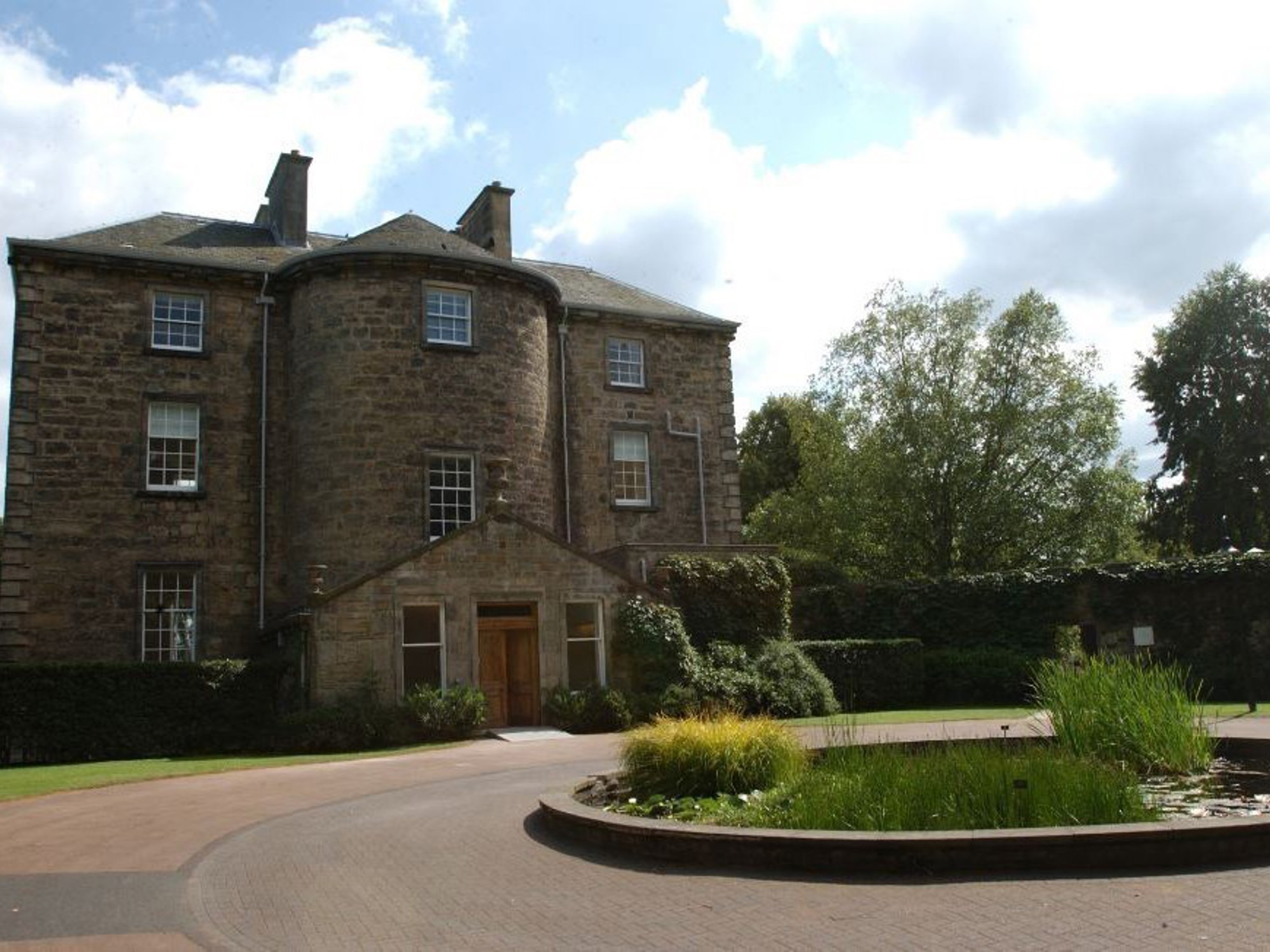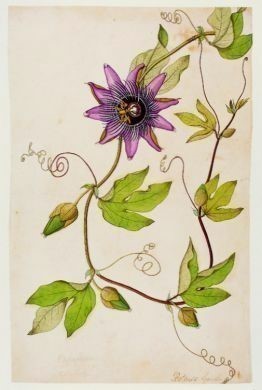
Passiflora X Violacea Loiseur - Deslongchamps Passifloraceate, 1846; watercolour, bodycolour, pencil and ink on paper.
The Dapuri Drawings
The drawings in this exhibition were from a collection of 173 held in the library of the Royal Botanic Garden Edinburgh. They were commissioned by Alexander Gibson, and East India Company (EIC) surgeon, and made by an anonymous artist between 1847 and 1850. The plants depicted were grown in the Botanic Gardens of the Bombay Presidency of which Gibson was Superintendent. The main garden was at Dapuri near Poona (Pune), but Gibson was also responsible for several other gardens in the Deccan, around Junnar, sixty miles to the north of Poona, of which Hewra (Hivre) was the most important. The plants depicted include species native to western India, and ones from as far afield as California and Australia. Despite extensive research it has not been possible to discover much about the artists except for the fact that he was a Portuguese-Indian draugtsman, and probably more used to drawing maps than botanical illustrations. The artist's monthly salary was only 20 rupees (Gibson's was 1124 rupees!), and he was also employed to draw plants by John Sutherland Law, another botanist active in Western India.
Alexander Gibson
Gibson was born in Laurencekirk, Kincardineshire and brought up in Montrose, where he was a pupil at the Academy. At the age of 15 he went to Marischal College in Aberdeen, where he studied general arts for two years before undertaking medical studies at the University of Edinburgh. He was in Edinburgh for three years, but did not take a degree, and attended botanical lectures at Leith Walk Garden for three months in the Summer of 1819, probably given by Professor Daniel Rutherford, then Regius Keeper of the Garden. Gibson acted as Surgeon's Mate on two voyages to India and China on the East Indiaman Royal George before becoming an Assistant Surgeon in the East India Company's service in Bombay in 1825. He was initially attached to the Company's Navy and saw active service in a war against Burma before being appointed as a Vaccinator. In this latter capacity Gibson travelled around Western India inoculating EIC troops against small pox, and developing an interest in the natural history, agriculture and languages of the region. In 1838 Gibson was appointed Superintendent of the botanic garden at Dapuri, near Poona, with the charge of several other gardens around Junnar. In 1840 the Bombay Government, being worried by declining stocks of teak available for shipbuilding, asked Gibson to report on forestry matters. Several years later he was appointed Conservator of Forests, without relinquishing his Dapuri job. As Conservator Gibson made extensive travels reporting on forests and trying to ensure their sustainable management. He retired in 1860 and his death in 1867 Gibson continued is restless travels, spending some time in India but visiting places as far afield as Peru and Tasmania. There is unfortunately no known surviving portrait of him.
Botanic Gardens of the Bombay Residency
The Dapuri Garden was started in 1828 by Sir John Malcolm, Governor of Bombay, in the grounds of a bungalow that he purchased as a summer residence. The first superintendent, John Williamson, lived only a few months after his appointment, and the garden was effectively started by another surgeon, Dr Charles Lush, who had trained in Edinburgh, where he studied under Professor Robert Grahan in the present garden at Inverleith. The garden was on poor soil in a meander of the River Powna and was abandoned in 1865 when the governor fo the day built a much more imposing residence at nearby Ganeshkind. The Dapuri site survives, but is now a workshop for the Irrigation Department of the Maharashtra government.
The Hewra Garden, which was actually the main focus of Gibson's horticultural activities, was started in 1838. It was part of a series of projected District Nursery Gardens instigated by the Malcolm's successor Sir Robert Grant. The primary role of the District Gardens was to grow useful (especially medicinal) plants, which were sold to offset their running costs, and to encourage the cultivation of new crops (such as potatoes and sugar cane) by local farmers. Gibson, however, also formed an important collection of the plants, especially the trees of Western India at Hewra, which were planted in whatever spaces were not needed for the more commercially important crops. The Garden was on good soil in a loop of the Kukudi River and was destroyed in 1976 by flooding as part of an irrigation scheme.
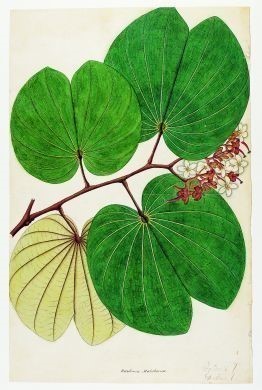
Bauhinia Foveolata Dalzell Leguminosae, 1846; watercolour, bodycolour, pencil, ink and gum arabic on paper.
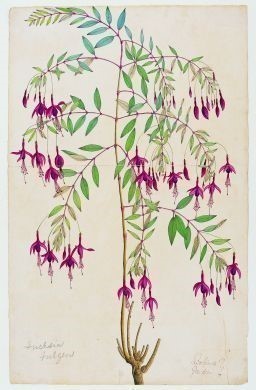
Fuschia cf. Magellanica Lamarck Onagraceae, watercolour, bodycolour, pencil and ink on paper.
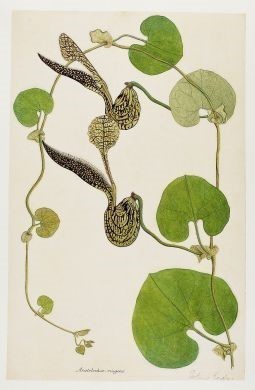
Aristolochia Ringens Vahl Aristolochiaceae, 1846, watercolour, gum arabic, pencil and ink on paper.
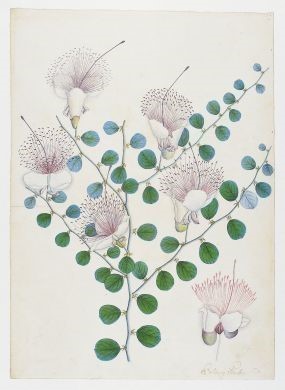
Capparis Spinosa L. Capparodaceae, 1846; watercolour, bodycolour, pencil, and ink on paper.

